Carla Maria Casagrande


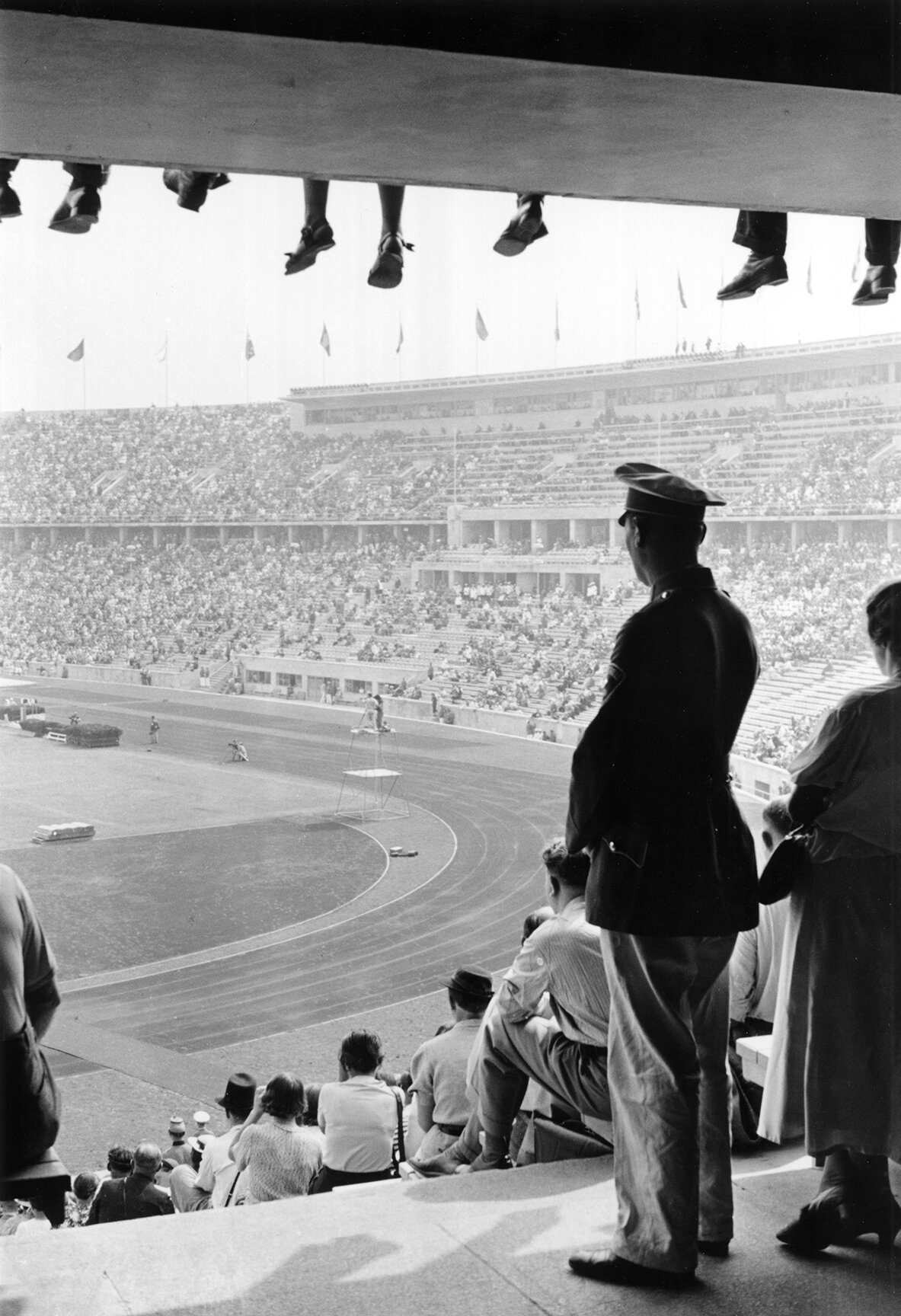
1936 Olympic Games in Berlin
Carla Maria Busch Casagrande was born in 1915, in Hamburg, Germany. She attended the Lerchenfeld Art Academy in Hamburg, intending to develop her skills so she could assist in the family’s outdoor advertising business. At age 17, while she visited her aunt in New York City for the summer, she applied to and was accepted at the Cooper Union School of Art, where she studied photography. She continued to travel in Central and South America on photo expeditions as well as in Central and Eastern Europe. In 1936, the 21 year old Carla Maria was the only invited female still photographer by the International Olympic Committee to be at the Berlin Olympic Games – a potential showcase for Germany’s pride and power; Casagrande’s responsibility was overwhelming. The images capture the competitions and the athletes, while reflecting the political and cultural aspects of the Games. Casagrande’s eye shows a personal connection to her subjects.
This portfolio of seven images from her original negatives grew out of a series of wonderful discussions, proofing and editioning in the years before her passing in 2008 at the age of 93 years young. Most of the editions were complete, all images had approved guide prints, two of the complete editions were signed. The portfolio project was completed with the guidance of her family and Palm Press.
Jonathan Gitelson
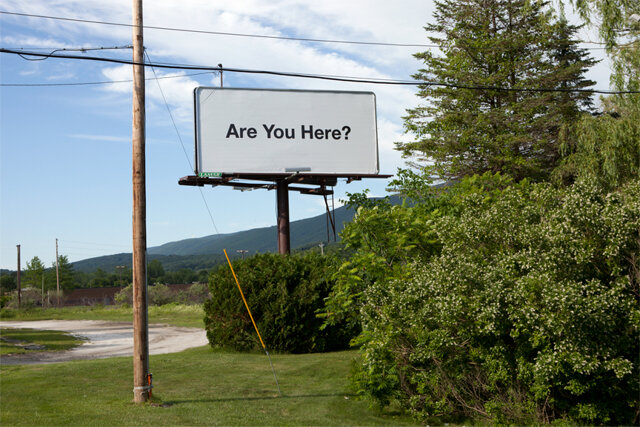
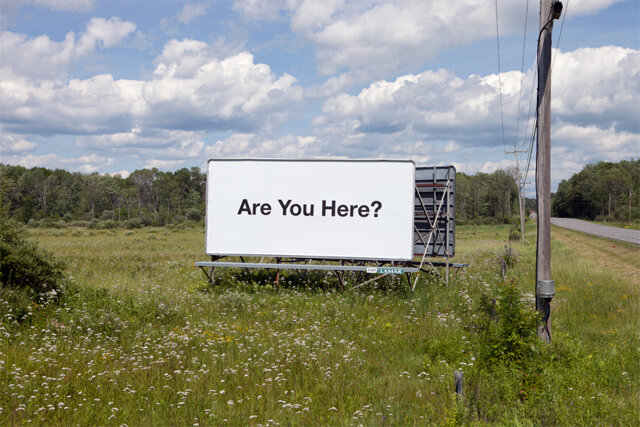
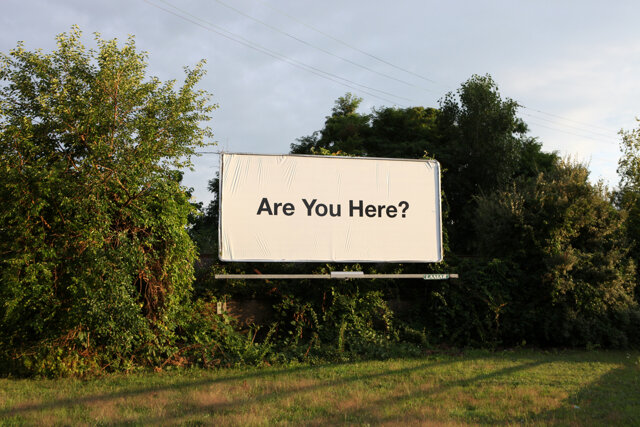
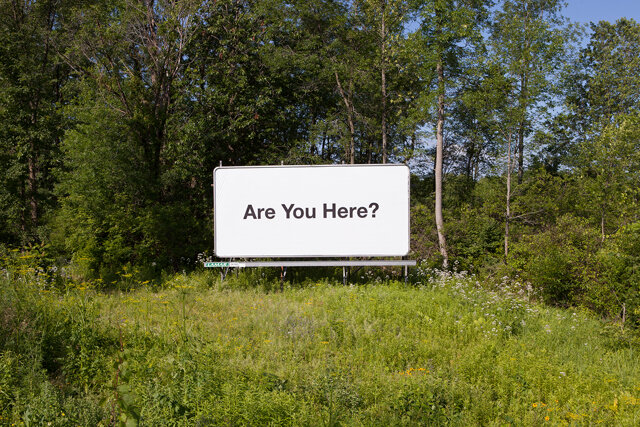
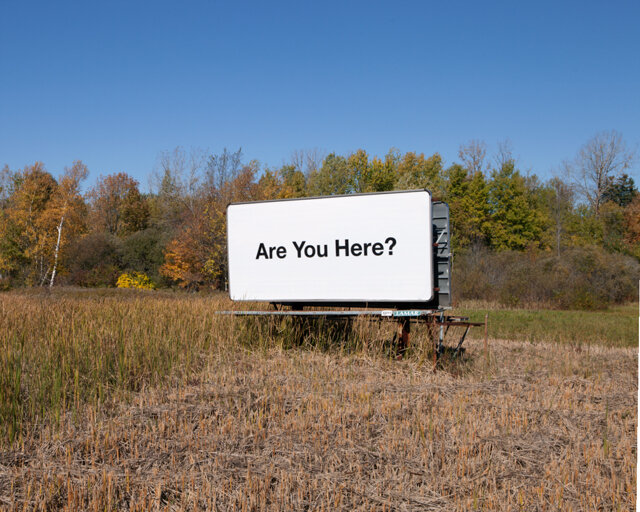
Are You Here?
We are pleased to be showing photographs of the installations of Jonathan Gitelson’s project, Are You Here? Are You Here? is a public art project consisting of a series of roadside billboards installed throughout New England and upstate New York in 2015. This question, which references the phrase You Are Here often found on highway rest area maps, is meant to engage passersby on multiple levels. Other than a literal statement regarding geography, the phrase Are You Here? is also a metaphysical question meant to encourage motorists to be more fully present and mindful of their experience at the particular moment they encounter the message.
For most of us, highway driving is a time when we use distractions like listening to the radio, music, or even our own thoughts and worries, and pay little attention to the changing sights and sensations whizzing by. It is Gitelson’s hope that the extreme simplicity of these billboards, and the unexplained and unexpected nature of their question, will startle viewers into at least a fleeting moment of “being here.” In 2016 Gitelson was commissioned by the deCordova Sculpture Park and Museum to create a site-specific installation on the grounds of their sculpture park as part of their Platform Series. The finished piece consists of a 10’ x 20’ billboard from my project Are You Here? and will remain installed from August 2016 to September 2017.
Greer Muldowney
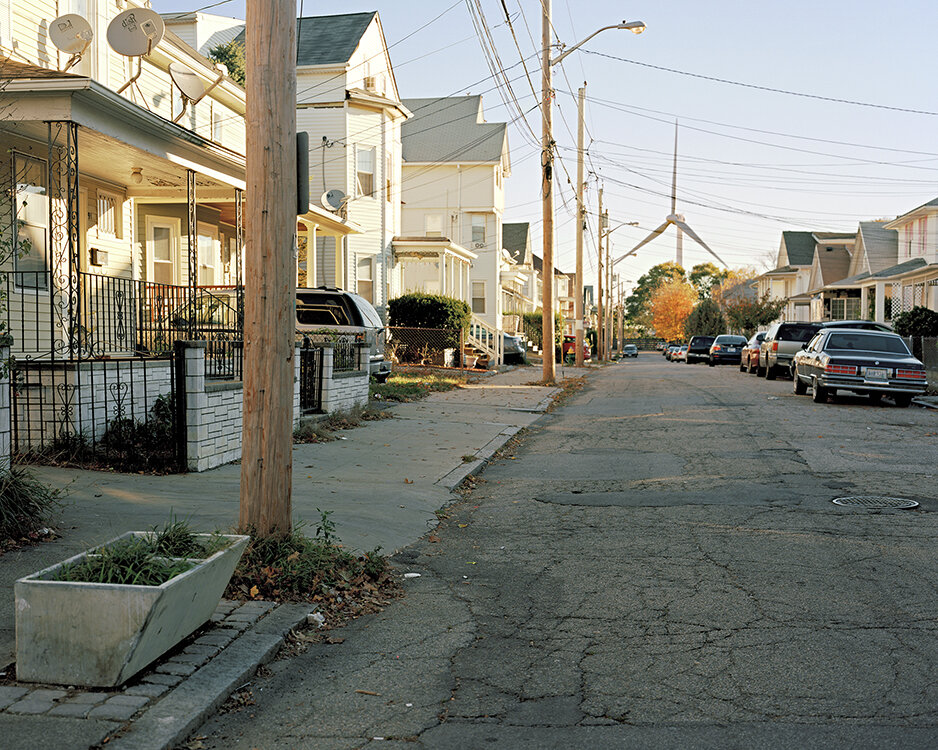
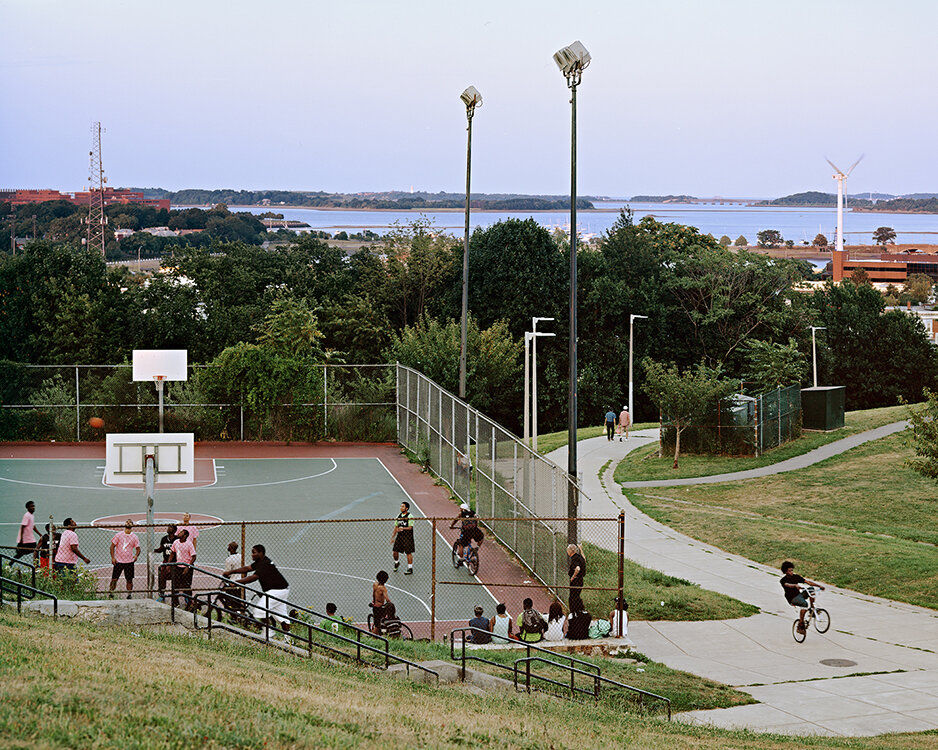
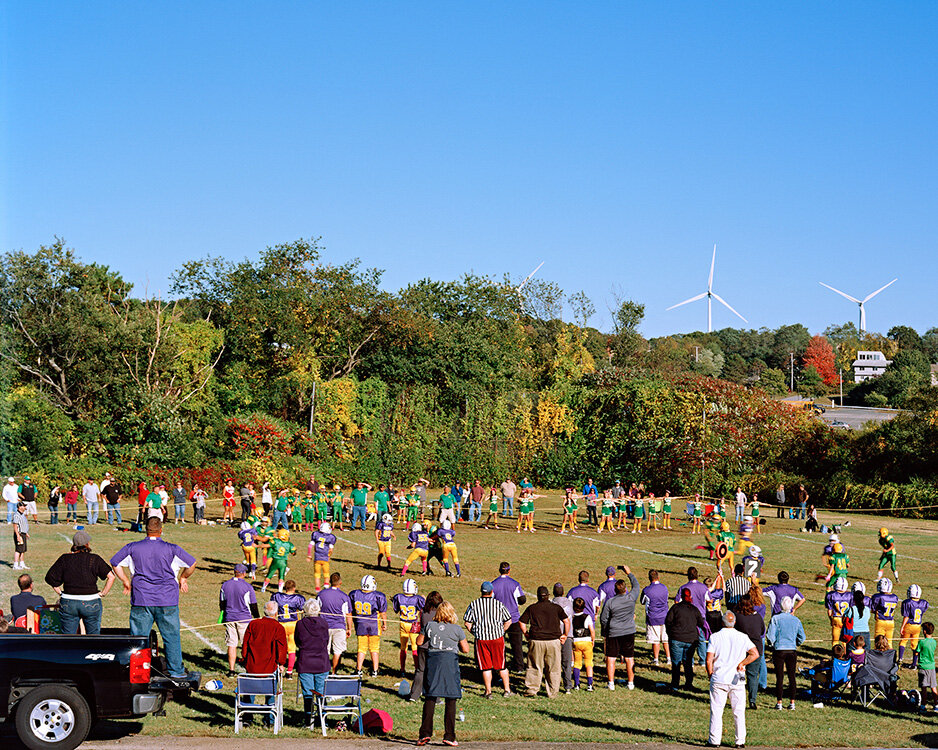
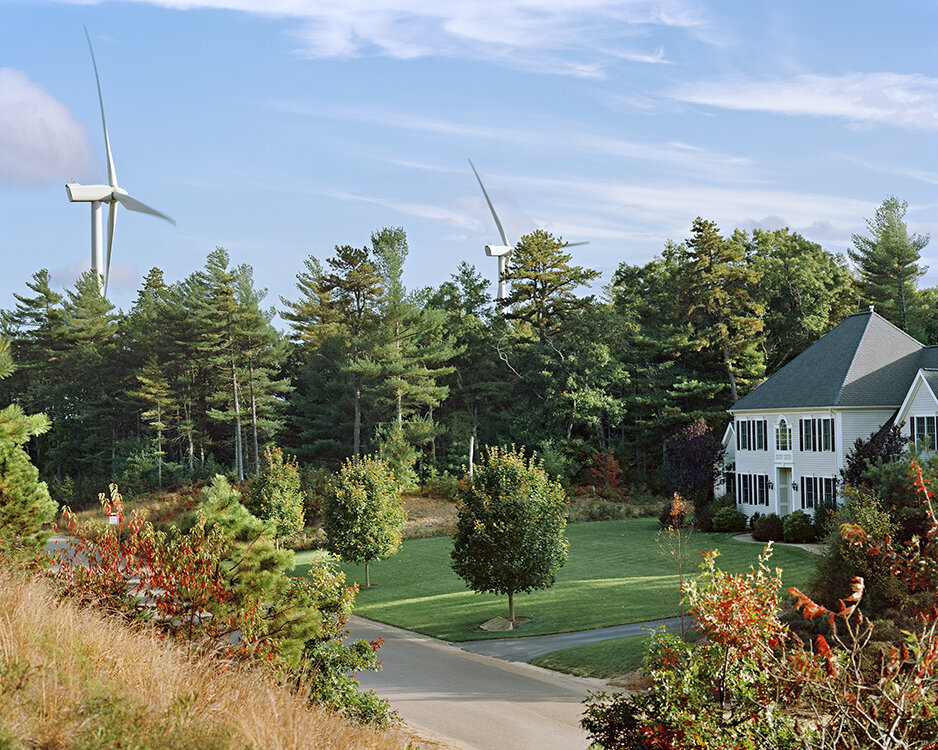

Urban Turbines
For the past several years Greer Muldowney has been photographing the emergence of wind turbines throughout the New England landscape. The resulting series of photographs, Urban Turbines, depict cliché images of the built landscape and architecture of this region with these new, abrupt structures. From public schools integrating turbines into their campuses and their science curriculum to coal burning energy plants erecting a structure from the most visible point on their property, turbines have become a complex new symbol of a progressive future.
The New England region of the United States is historically progressive, energy poor and densely populated along its coast. The region has recently experienced a building boom in green energy, specifically turbines placed very close to inhabited areas. The policies that surround this boom are fortified in tax breaks and federal and state grant incentives. This is bolstering public works to upgrade infrastructure and create educational facilities in green energy, but also encouraging developers to capitalize on the financial opportunities. These incentives are taking priority over land use concerns and urban planning. Ultimately, the turbine industry that has popped up in New England is not entirely based on the traditional model of sustainable wind farms found in the West, but instead individual and small clusters of turbines cropping up where opportunity of market, as well as good PR occur - opportunities that may pay off more in tax incentives to developers than useable energy in the grid. Urban Turbines illustrates how these structures have encroached on the landscape of coastal New England.
